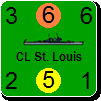notenome
Posts: 608
Joined: 12/28/2009
Status: offline

|
This is getting a little off topic, but when speaking of the Waffen-SS one has to distinguish between time period and particular formations, amongst other things. The SS had a few advantages over Heer formations, namely better recruits, a better training system (Paul Hausser had some fairly inovative ideas and he saw in the SS a way to bypass High Command bureacracy) and generally first dibs on new equipment (sometimes a double edged sword, the new Panther tanks were probably more trouble then they were worth during the Kursk offensive). On the other hand the Waffen SS had a growing problem as the war went on with their mid-range oficers, with many being fanatics and/or incompetent and an early war tendency to take higher casualties then the Heer (I believe high command contemplated disbanding SS-VT after Poland, but were blocked).
However, beginning with the invasion of the Balkans the 'original' SS formations (LSSAH, Das Reich, Totenkopf) began to mature and performed much better than their early war counterparts. They earned the title Hitler's firemen and were generally given the toughest assignments. Typically Wiking is added to this list, even though they were distrusted by High Command in the beginning, Wiking distinguished itself in 41 and 42. If you press me too hard on this I won't be able to back this up properly, but I believe Das Reich was/is considered the best performing division of World War II. This sucess led to a massive expansion of the Waffen SS, which was not able to reproduce the 'original' four's performance. The game simulates this by separating between elite and non elite SS units. To say that the SS were supermen is, of course, ridiculous. But one must give credit where credit is due.
However the topic of the Waffen SS often leads to flame wars (for clarification, I don't want to and haven't acused anyone of flaming, my previous comments are an effort to caution people to be more diplomatic so that other users won't harp on them and then this thread will go to hell like others before it), so let's go back to Soviet offensive performance. I believe that nothing within Soviet echelon doctrine deserves the +1 bonus. If the idea is to model human wave doctrine, then Soviet attacks should mass ground elements in groups who gradually reduce range, with each group starting at a smaller range. So if let's say we have an attack featuring 300 rifle elements. The engine would group them in three groups, the first group starting at x distance (let's say 2000 meters) that would attempt to close within range. After that attack stalls (due to casualties or morale or however it is modeled by the engine that an attack stalls) the second group would begin at the last attack's distance plus +500 meters (x+advance-500=y) and continue to attempt to close the distance. After that stalls the third group would attack at +500 (y+advance-500) and attempt to close the distance. If the Soviets reach minimal combat distance, the Axis retreat.
What has me worried is that if the +1 bonus is prooving so contentious now, I fear for 43, 44, 45 when the Soviet have corps with much higher combat values. That would allow the Soviets to basically perform broadfront advances (especially with the artillery advantages they have) without trying to spread the Axis out. Historically the Soviet offensives into the Balkans were aimed at spreading the Axis thin, but the screenshots of the Soviet vs AI games seem to indicate that most players opt to simply go straight for Berlin. This makes sense if your consider game mechanics, 3 corps + arty can stack much more combat power than 3 divisions, which when coupled with the +1 bonus should lead to predictable and continuous success for the Soviets. However Soviet offensives were not unstopable in 42 (as Operation Mars can attest) or even 44 (the First Jassy-Kishinev Offensive).
|
 Printable Version
Printable Version






 . While I may disagree with some of your conclusions, I also agree with many and I absolutely love
. While I may disagree with some of your conclusions, I also agree with many and I absolutely love  your detailed analysis.
your detailed analysis.











 New Messages
New Messages No New Messages
No New Messages Hot Topic w/ New Messages
Hot Topic w/ New Messages Hot Topic w/o New Messages
Hot Topic w/o New Messages Locked w/ New Messages
Locked w/ New Messages Locked w/o New Messages
Locked w/o New Messages Post New Thread
Post New Thread